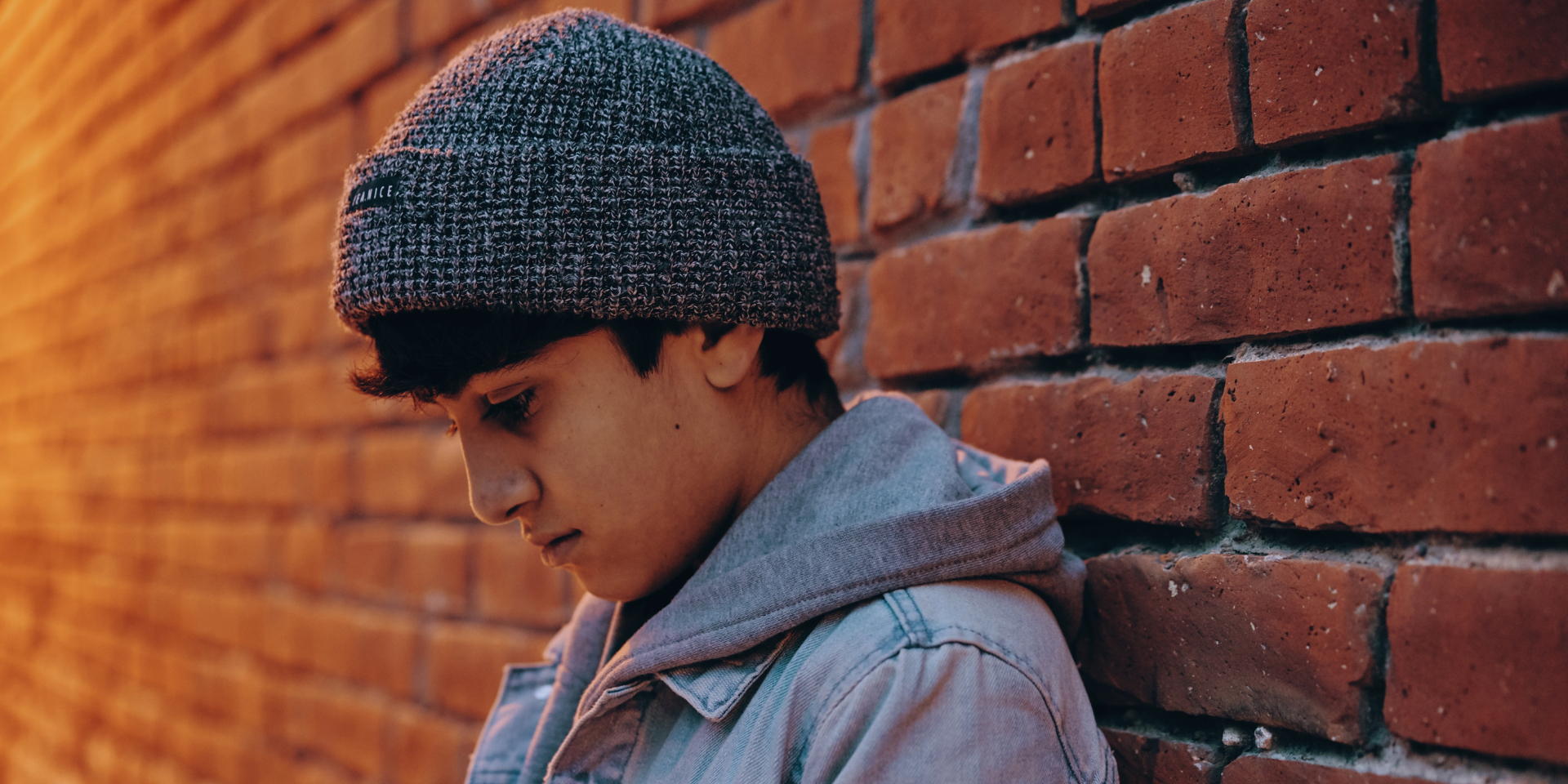Advertising makes the teenage years seem like the best years of life. However, adolescence is a time of great emotional turmoil for both children and their parents. It’s a time when many important decisions are made, with life-changing consequences.
Teenagers today are exposed to more influences and temptations than at any other time in history. Thanks to the internet and widespread media, young people have more access to information that is not filtered by adults than ever before. That’s why for parents, their children’s puberty and teenage years are the toughest test they’ll ever face as parents and mentors. After years of waking up in the middle of the night to feed their babies and dealing with toddler tantrums, parents are now experiencing first-hand the popular adage: “Little kids, little problems; big kids, big problems.”
Although they already know that adolescence is a difficult time for their relationship with their children, most parents are taken completely by surprise by the dramatic changes in their children’s behaviour. Teenagers are often temperamental, insecure, argumentative, impulsive, impressionable, and rebellious. In addition, adolescence is the most dangerous time for adopting risky behaviours—alcohol, tobacco, drugs, violence, suicide, and promiscuity.
Causes of bizarre teenage behaviour
Until recently, scientists believed that hormones were responsible for teenagers’ bizarre behaviour, but recent studies point to another cause: their brains develop more slowly than their bodies. After puberty and until around the age of 20, teenagers lose about 1% of their grey matter each year, according to a study conducted by researcher Jay Giedd at the Institute of Mental Health in Bethesda, Maryland (USA). This loss of grey matter disrupts neural connections that were overproduced in childhood, starting with the basic sensory and motor areas of the brain. The frontal lobe, which is responsible for impulse control, thinking and decision-making, matures later. This may explain some of the bizarre decisions made by the average teenager. Although the brain acts like a sponge at this stage of life when it comes to accumulating knowledge, the lack of impulse control explains much of why teenagers make irrational decisions.
If this is so, how can parents help teens get through this stage of life without jeopardising their future, by avoiding decisions and actions that could affect their entire life? Many risky behaviours can lead to addiction, so prevention is essential. Preventing is easier than treating. Over the past 20 years, increasing government and private resources have been devoted to the prevention of alcohol, tobacco, and other drug use. These efforts have led to scientific research to identify effective prevention strategies.
Walk a mile in their moccasins
There’s an old Native American saying that you can’t understand a person until you’ve walked a mile in their moccasins. Parents must make every effort to understand the processes by which yesterday’s children become tomorrow’s adults. There are many books and articles describing the problems of adolescence, and parents can also use the example of their own adolescence, when they had problems such as being embarrassed by acne breakouts, or when they admired the celebrities of the day and copied their behaviour. However, it is important to realise that the pressure is much greater today.
While two decades ago the public didn’t know anything about the private lives of stars and actors, today the tabloids are full of salacious details about people who are far from being models of morality and normality for children. Today’s youth groups are also very different from those in which parents spent their teenage years. That’s why parents need to be informed and fully aware of the world teenagers live in. Parents who know what to expect are more likely to help their children safely through this period.
Extracurricular activities are not enough
One of the most popular ways to keep teenagers away from potential behavioural dangers today is to keep them busy, based on simple logic. Teenagers seem to pick up risky behaviours especially after school, when parents are not at home. So many parents and teachers have concluded that involving them in extracurricular activities will reduce the risks and solve the problem. It turns out, however, that this approach doesn’t work so well. According to a study published in the Journal of Drug Education, the percentage of teenagers who have used drugs, alcohol, and other harmful substances is only slightly lower among those who are involved in extracurricular activities (sports, theme clubs, etc.) than among those who are not. Extracurricular activities are recommended for developing skills and knowledge, but they are not enough to keep teenagers out of trouble.
Communication, an early and ongoing need
It is never too early for parents to talk to their children about the harmful effects of smoking, alcohol, and drugs. From the age of six, children are very open to conversation and parents can easily explain the effects of tobacco and alcohol on their health and quality of life. It is much easier to influence a child’s behaviour before they try these drugs out of curiosity or because of peer pressure.
Of course, parental involvement must continue until children are physically, emotionally, and mentally mature. As they grow older, children will take flight in achieving their goals if they feel that their parents are genuinely interested and even enthusiastic about their concerns and successes. At the same time, it will be easier for parents to notice certain changes in behaviour and to recognise signs of a problem.
Teenagers need to know that they can talk to their parents anytime, and if the relationship has been strong since childhood, communication will be easier in adolescence. If they are allowed to express their feelings and opinions, and if these are taken into account, their self-esteem will be strengthened and they will feel a sense of belonging.
Lifestyle models
Children whose parents use alcohol, tobacco or drugs are likely to follow their example. “Actions speak louder than words” and children imitate what they see. In this case, advice has no effect. This could be a very good opportunity for parents. They now have a good motivation to change their own habits, and success would be a win-win situation. Parents could give up the vices that are damaging their health and at the same time become role models for their children in terms of willpower and behaviour.
Rules and consequences
Teenagers develop very quickly, and parents need to keep up by adapting rules at the same pace. Even if they may not like them, rules provide a basis for their safety. They play a similar role to the fences around children’s playgrounds. Experts say that, strange as it may seem, young people respect parents and teachers who set fair rules. This makes it all the more important for parents to set very clear, reasonable and, as far as possible, acceptable boundaries for teenagers in order to prevent risky behaviour. And if there are rules, there must also be consequences for breaking them. For sanctions to work, they need to be announced when the rules are set and applied in a timely manner. In this way, responsibility for one’s own behaviour and its consequences falls on the shoulders of the young people. On the other hand, rewards for good behaviour can work wonders, so positive reinforcement should not be forgotten. The right attitude and a close relationship with parents will help teenagers stay on track.
Educational institutions involved in prevention
Research over the past 20 years has shown that educators can have a major impact on preventing alcohol, tobacco, and other drug use among their students. Many adolescents begin using legal and illegal drugs in middle and high school. Schools are therefore the most important institutions to influence through age-appropriate prevention strategies. Schools can help them to understand the short- and long-term effects of abusing harmful substances and products. They can also teach them how to resist peer pressure without damaging their relationships with friends and peers.
In Romania, several agencies and NGOs have implemented prevention programmes in recent years, but given the high number of adolescents who smoke (40-60%), it is clear that these programmes reach very few of them. In terms of effectiveness, the most notable results are achieved by educational institutions with clear policies to discourage drug use. A study conducted at Andrews University by the Seventh-day Adventist Church, which promotes total abstinence from alcohol, tobacco, and other drugs, examined three areas: daily use of alcohol, cigarettes, and marijuana; age of initiation; and trends in use after graduation. The results were compared with similar studies of representative samples of students at American universities in general. Disaggregated by gender, ethnicity or race, the results of the study showed that, on average, the percentage of those who used drugs was 5 to 15 times lower at Andrews University than at other universities.
Belonging to a group with social interests
The peer group exerts a lot of pressure on teenagers. Researcher Judith Rich Harris says that at this age, friends are more influential than family. During adolescence, when they are going through a complex identity crisis, teenagers need to feel accepted and valued in their group. But if they join the wrong group, chances are they will get into trouble. That’s why it’s up to parents and teachers to teach them how to choose their friends and guide them towards groups, clubs, organisations or churches that can provide a healthy climate for their development.
One of the most successful strategies for preventing drug use is to involve groups of teenagers in social projects under the guidance of adults who do not use drugs. These projects can include helping old or disabled people, children in care homes or old people in homes. Adolescents should be encouraged to participate in environmental projects and similar activities. General attitudes towards drug use, self-esteem, group cohesion and social skills are indicators of the effectiveness of such a programme.
The transition to adolescence is never easy for children or their parents. To guide them through the difficult journey of adolescence, parents need to understand them, have a warm and close relationship with them, communicate openly and constantly, and be role models. As much as possible, they should ensure that the institutions and groups their children belong to provide a healthy climate conducive to normal development. The effort is similar to that of a nature lover who undertakes a difficult mountain trail. Even if the path is difficult, the beauty of the landscape keeps them going. Parents and adolescents can successfully walk this path together, at the end of which lies the summit and the joy of success.



















